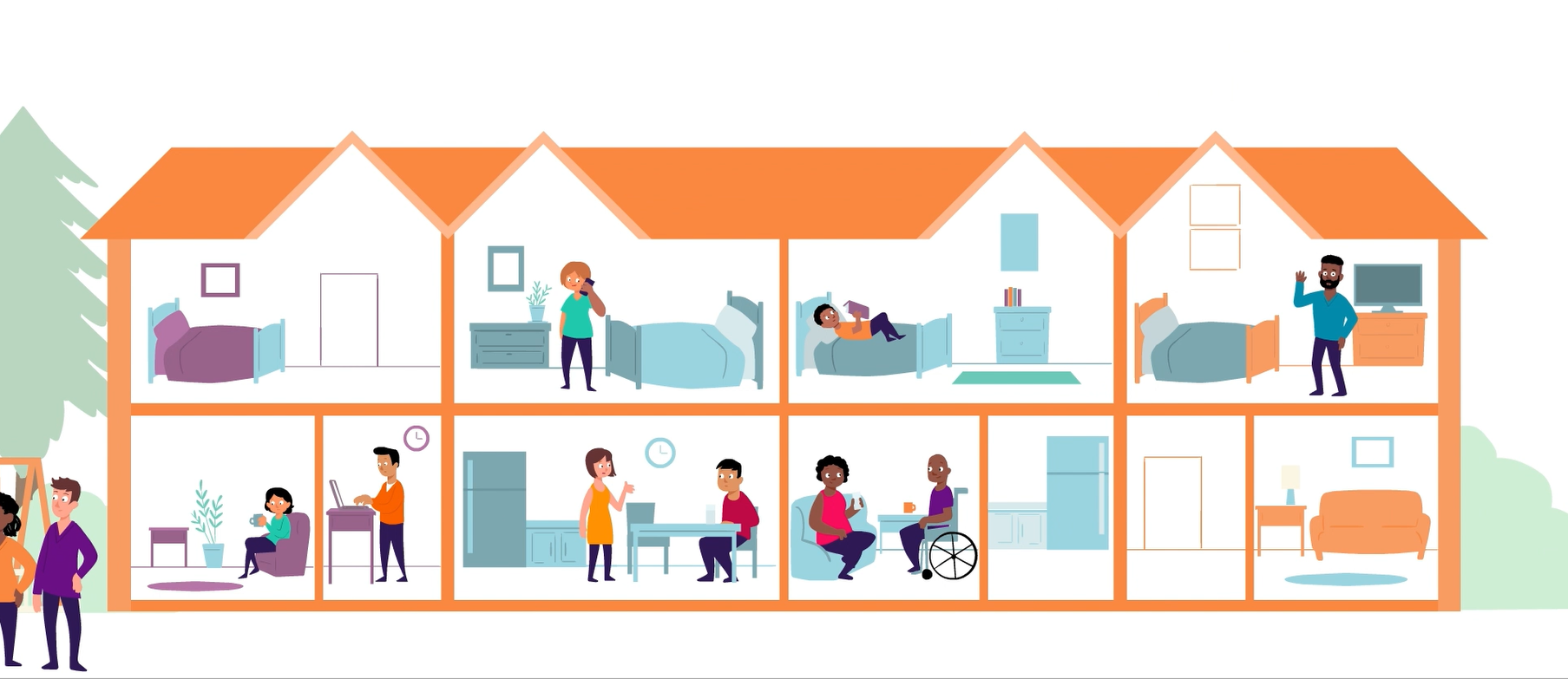This article is part of the series Flashcards
A fixed-income senior. A public-school teacher. A line cook. A medical technician. When there’s a housing shortage, if you’re middle- or low-income, you may struggle to find a home you can afford in your neighborhood.
The same land use rules that limit homes like triplexes or apartments, the kinds of modestly sized homes that more middle-income Washingtonians can afford, also limit subsidized, affordable housing that lower-income residents need.
One major fix is pretty straightforward: For homes that people of all incomes can afford, we must allow all kinds of affordable homes.

Blame the shortage. Blame the bans. Fix the zoning.
In places like Washington state, the shortage of available homes is so acute that even middle-income workers can’t find places they can afford. This is true in the state’s big metros and their suburbs and, increasingly, in medium and small towns too. When competition is fierce, all the smaller, older, “naturally affordable” homes are snapped up by the highest bidder. People who make too much money to qualify for housing subsidies but not enough to find a home they can afford to rent or purchase, are left with no options.
And so are their lower- and fixed-income neighbors. When most cities ban multi-family housing types in most of their neighborhoods, it means in most communities, there aren’t enough subsidized homes to go around, and not enough subsidy dollars either. If you qualify, you can still be on a waitlist for years before getting a place.
Bans on apartment buildings, townhomes, and duplexes, combined with costly parking mandates, have contributed to Washington having the fifth-worst undersupply of housing in the United States. These same zoning and land use rules—effectively, bans—are ubiquitous in most cities, keeping both kinds of affordable homes out of our communities: subsidized and market-rate.
Our current rules are inflicting a housing shortage, driving up prices and limiting our choices. Patience Malaba, Executive Director, Housing Development Consortium of Seattle-King County, a membership association of more than 200 organizations who seek to advance housing stability, put it simply: “The one-size zoning we’ve got now isn’t working.”
The good news is we can update our land use rules to stop limiting choices and pushing prices up. We can adopt rules that allow the homes that better fit the needs of people who live and work here now. And we can make all kinds of affordable homes legal and available, where we need them.
We can solve this challenge when more low-income housing and housing justice advocates, homelessness solutions champions, affordability champions, and subsidized housing developers work together to make all kinds of affordable housing legal to build in our cities. Together we can rein in prices and rents and make sure all our neighbors are safely, affordably housed.
Learn more in this 90-second video, and share this resource with your networks:
Our Homes4WA video was adapted for Washington state from a California YIMBY production, in collaboration with Ruben DeLuna Creative.


